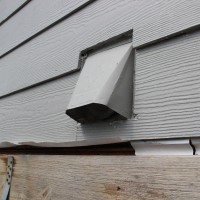Fixing Your Dishwasher Up

A dishwasher helps to clean dishes fast and conserve water. It is an indispensable home appliance due to its portability and ease of use. Unlike most other appliances, it is easy to repair with just a little skill and a few household tools. Most dishwasher owners experience the same mechanical problems including the dishes not coming out clean, leaking of water from the dishwasher and the device failing to start. Doing the repairs at home is easy and saves money since most dishwasher problems do not require professional help. In fact, most repairs fall under routine maintenance.
Dishes do not come out clean
This is a common occurrence that may be a result of a few bad practices and habits such as listed below. Find out how you can fix this problem too:
• The dishwasher is overloaded. Read the user manual carefully to ensure you are using the device properly.
• The spray arm has been obstructed, thus limiting its effectiveness. Check whether there is any silverware below the lower basket.
• Using the wrong detergent in the dishwasher.
• A temperature that is lower than recommended has been set. The optimum temperature should be set below 120 degrees Fahrenheit, to prevent any burning incidents and to conserve energy. Dishwashers often have heating elements that regulate the temperature, but in some cases, they lack a heating booster and have to run on household water. A quick check on the manual would be useful.
• Clean the spray arm – twist it gently to test whether it spins freely, Check the holes to see if they are blocked by debris. If the arm does not spin or it contains any debris, remove and clean it.
• Clean the float switch – this only takes a few minutes to open and clean. Sometimes debris can cause the switch to float, preventing the tub from filling. The dishwasher can only clean effectively when the water reaches the right the level.
• Clean the valve screen – a lower water level is caused by a clogged intake screen valve. Test it by closing the door, turning on the machine and filling it with water. Check the water level, and if it does not reach the heating element, it is on a low level. Remove the intake valve screen and clean it.
Does your dishwasher leak water onto the floor?
Most leaks are a result of a poorly sealed door. A faulty seal is tested by looking for drips on the floor. If the seal is not the problem, the hose connection may be loose. In this case, unscrew the lower front panels and tighten the hoses.
To adjust a leaking door, first test the extent of the fault by closing it and latching it. The door should not be budged. You can also test this by running the dishwasher and listening to any abnormal sound. If the sound decreases when you push the door in, it may be too loose. Adjust the latch plate located at the top of the frame to tighten the door and seal the gasket better. If the gasket is brittle, cracked or worn out, it needs to be replaced.
The dishwasher fails to start
Sometimes the appliance may fail to run, which is caused by a problem in power transmission.
• Check the water supply
Dishwashers are normally located near a shutoff, which is a switch above the sink or a cord under the sink. If it is off, turn it on or plug in the appliance. If it fails to start, check the circuit breaker to ensure it is in place. The dishwasher should have its own circuit breaker.
• Spin the motor
When the dishwasher stands unused for a long time, the motor may fail to turn. This is seen when the dishwasher produces a humming sound but does not run. To correct this, spin the motor by hand turning its blades. If this fails, the problem could be a bad switch, bad wiring or a clogged pump.






